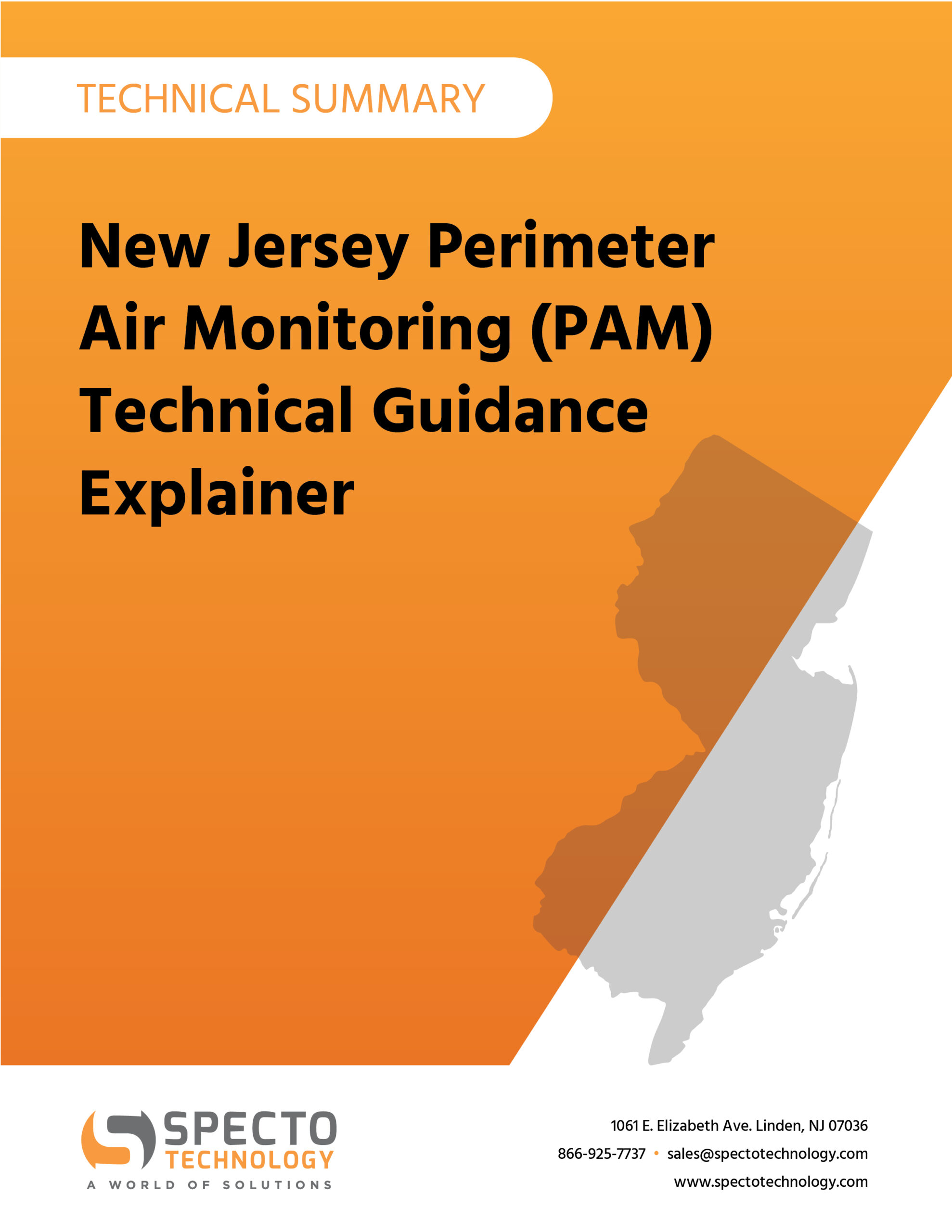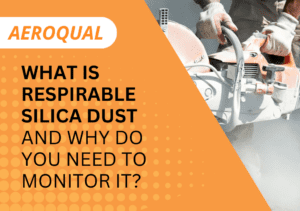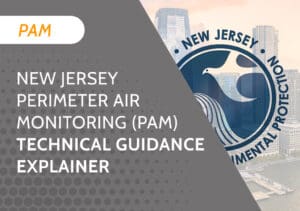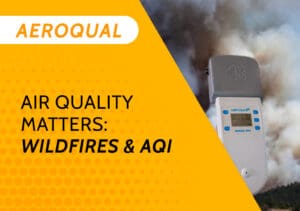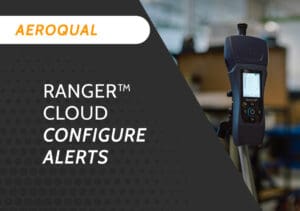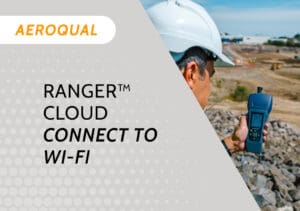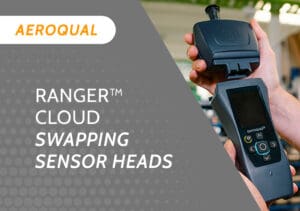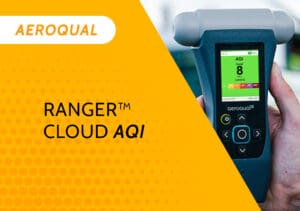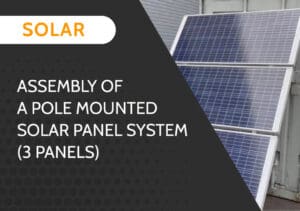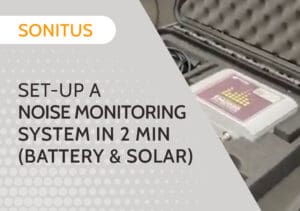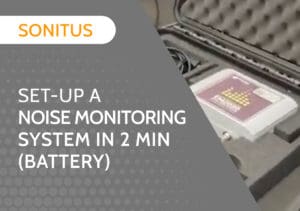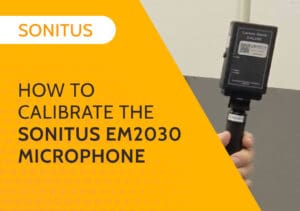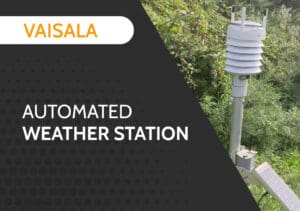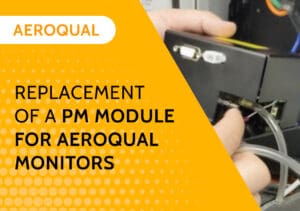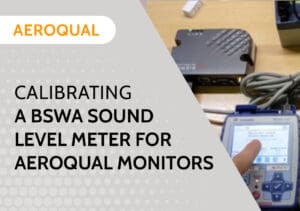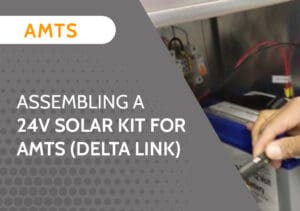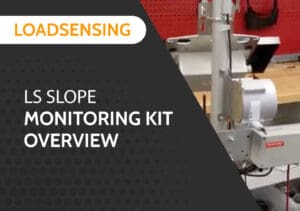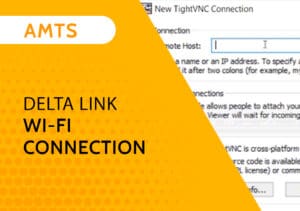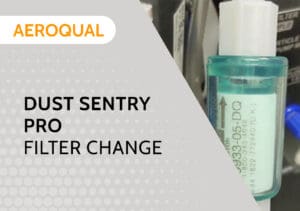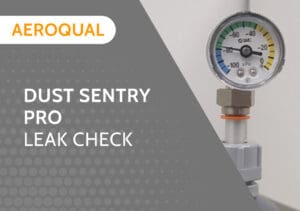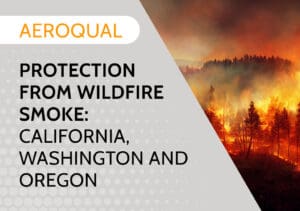
New Jersey Perimeter Air Quality Monitoring (PAM) Technical Guidance Explainer
This explainer document summarizes the latest guidance provided by the NJDEP regarding air quality monitoring on remediation sites in New Jersey.
Specto Technology is a leading provider of real-time air quality monitoring solutions for remediation professionals in the Northeast. Our environmental team, with decades of experience working as air quality consultants, has reviewed the NJDEP documentation and attended their 2-day training seminar to develop this brochure.
Please note that the information presented here is our interpretation of the guidance document, which can be found in the NJDEP SRP Guidance Library (https://www.nj.gov/dep/srp/guidance/#pam).
An Introduction
PAM monitoring has been required by regulation for remediation activities in NJ since May 2012 (N.J.A.C 7:26E-5.5(b)7. The new guidance document provides more detail on when and how this should be implemented.
PAM is prescribed during remediation activities where there is the likelihood for emissions of contaminants to ambient air that may impact off-site human receptors (i.e., nearby residences, schools, hospitals, etc.).
PAM includes real-time monitoring of contaminants of concern (COC) to control adverse off-site exposures by managing site activities. A typical monitor is likely to measure non-contaminant specific parameters such as “PM10” (particulate matter < 10 microns) and total VOCs (volatile organic compounds), with at least one monitor capable of measuring meteorology on the site.
Confirmatory laboratory analysis is used to assess the effectiveness of non-contaminant specific monitoring methods.
When Does this Apply?
The methodology used in the guidance document must be in effect by June 3, 2024. PAM monitoring is required for projects longer than 20 days within a 30-day period, i.e., one month.
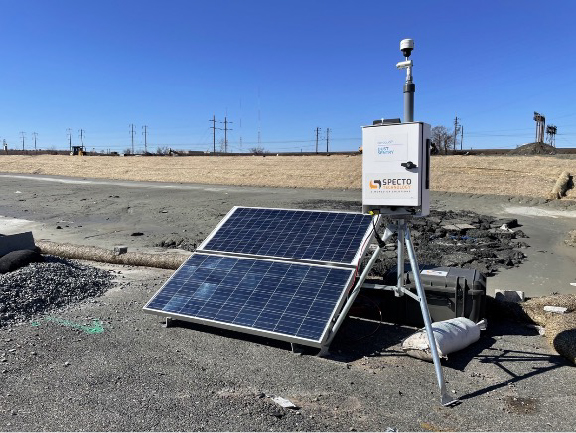
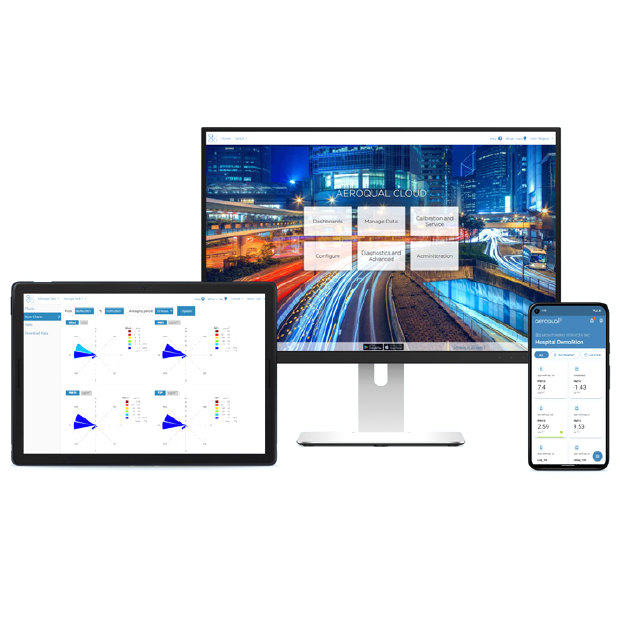
Real-time Perimeter Monitor with an online portal for automated data collection, presentation, and alerts.
How to Develop a PAM Plan
Below is an outline of the 7 steps required for developing a PAM Plan including identifying airborne COC, establishing site-specific criteria, identifying monitoring methods, and preparing a site plan including the location of monitors and actions to implement when your criteria are exceeded.
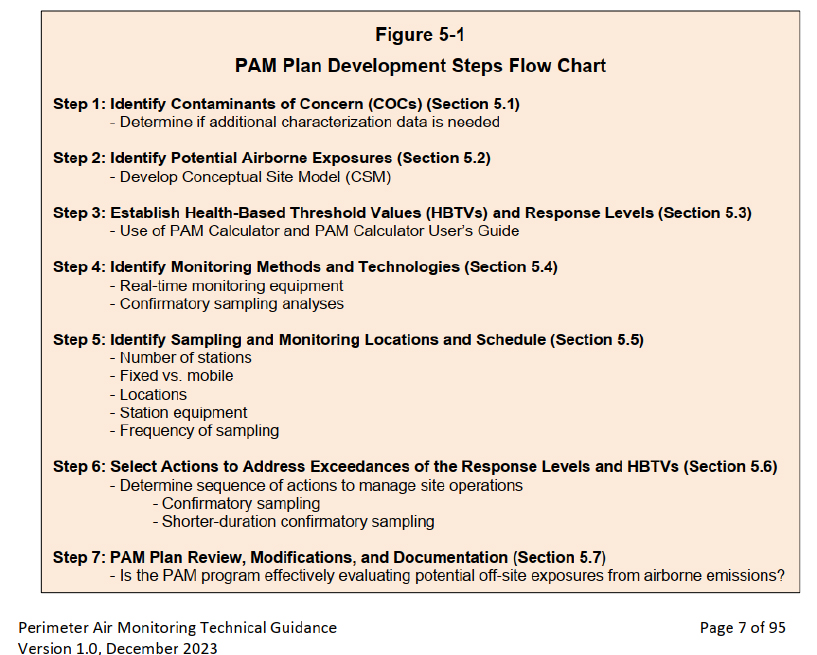
STEPS 1 and 2 – Identify COCs and Potential Airborne Exposures
The guidance document assumes that there has been sufficient information collected during preliminary investigations to develop a list of COC. Typically, contaminants of concern include:
- “PM10” (Particulates, metals, asbestos)
- VOCs (i.e., Benzene, TCE)
- Semi-volatile VOCs (i.e., PAHs, PCBs, Naphthalene)
- Other – mercury vapor, metal fumes, and odor-causing compounds (i.e., H2S, Ammonia)
Identifying COC may begin by comparing the COC concentration detected in media (soil, sediment, water, etc.) to NJDEP standards and criteria. However, an exceedance does not necessarily mean that this compound will be an airborne risk to off-site inhalation exposure.
To assess this risk, an investigator should use a conceptual site model (CSM). A CSM evaluates and identifies source materials, emission-generating activities, transport mechanisms, and exposure pathways to nearby sensitive receptors. A CSM should also consider background (ambient) and off-site (upwind) concentrations of COCs. Technical guidance on the development of a CSM can be found at https://www.nj.gov/dep/srp/guidance/#csm
STEP 3 – Establishing Health-Based Thresholds (HBTVs) and Response Levels
To assess the impact of remediation activities on nearby sensitive receptors, site-specific criteria must be established for COC. The guidance document separates this into two sections:
- Health Based Threshold Values (contaminant specific)
These are contaminant-specific health-based criteria using the health targets outlined in the New Jersey Brownfield Act (N.J.S.A 58:10B-12. d), inhalation toxicity factors, exposure frequency, exposure time, and duration of the project.
HTBVs are typically time-weighted averages (TWAs) over the entire workday (i.e., 8 hours).
2. Respond Levels (non-contaminant specific)
These are not contaminant specific but a proxy or surrogate for the HBTV. Response levels are required because it is generally difficult to measure specific contaminant concentrations in real time.
For particulates, “PM10” response levels will generally be used as the surrogate. For VOCs, Total VOC response levels will generally be used as the surrogate. TWAs for response levels are typically 15 min.
For certified real-time instrumentation that can detect specific contaminants (i.e., field GC, mercury detector) response levels should not be used, as no adjustment to the HBTV is necessary.
BOTH HBTVs and Response levels can be calculated using the NJDEP PAM Calculator.
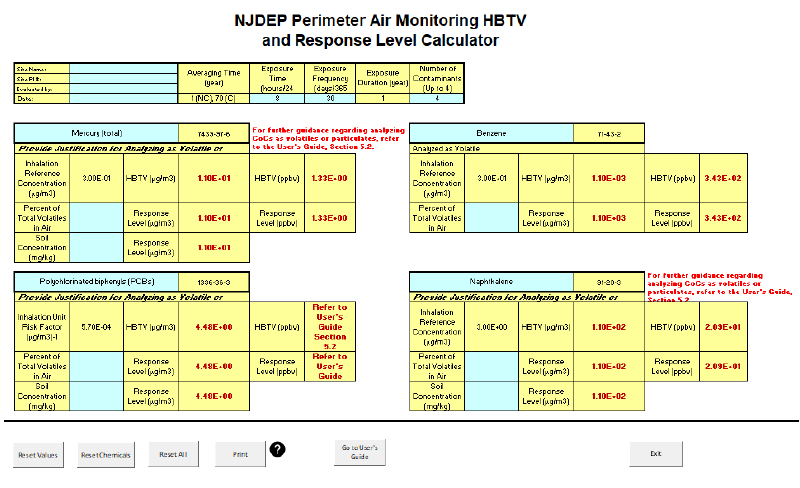
The PAM Calculator
The PAM Calculator is a tool for investigators to quickly create HBTVs and response levels and can be found here: https://www.nj.gov/dep/srp/guidance/#pam
sIt is also a useful screening tool to identify the COC that will be most relevant for the project (STEPS 1 and 2), as it uses site-specific information such as contaminant concentrations in media, exposure time, exposure frequency, and duration of the project.
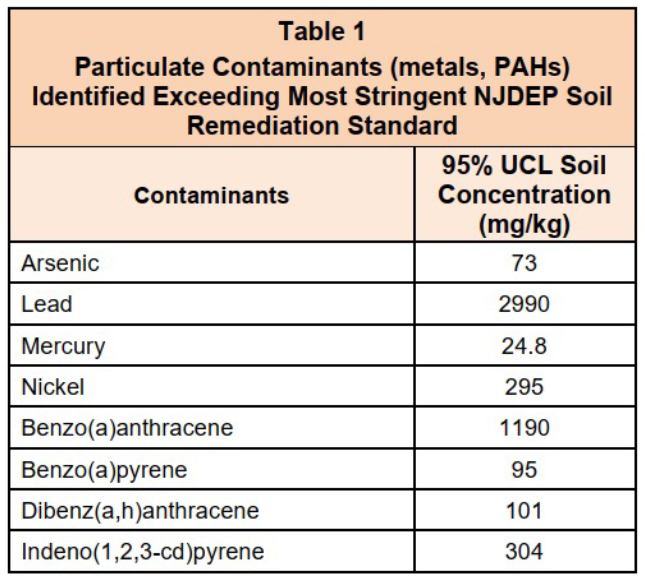
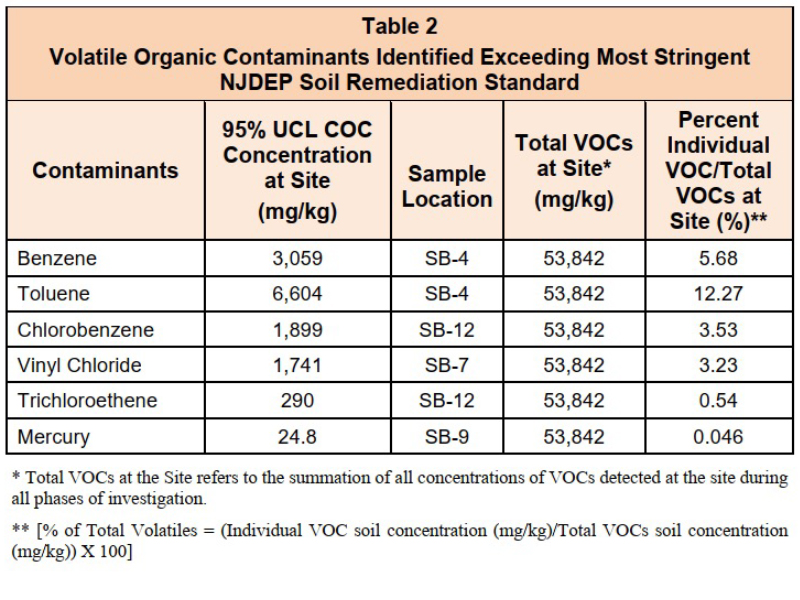
Example of COC List and inputs into PAM Calculator – Particulates and VOCs (NJDEP Guidance 2023)
To use the calculator, please follow the steps below:
- Input site-specific information in the table at the top of the calculator (blue boxes)
- Select your COC from the drop-down box (up to 4 per calculator)
- Input the percent of total volatiles in air OR soil concentration for the COC.
- Read the HTBV and Response Levels and additional notes (in red)
Some Notes on using the PAM Calculator:
- Use the 95% upper confidence level (UCL) of the mean concentrations for each contaminant that exceeds the most stringent remediation standards.
- The total volatiles refer to the summation of all concentrations of VOCs detected above the most stringent remediation standards during all phases of the investigation.
- For some contaminants, HBTVs and/or response levels cannot be calculated (this will be highlighted in red). Please contact the NJDEP for assistance.
- For odor concerns, please contact the NJDEP to discuss potential odor thresholds for the site.
- The Users Guide provides more specific instructions for some contaminants.
- For projects longer than a year, please contact the NJDEP to get a revised PAM calculator.
STEP 4 – Identifying Monitoring Methods and Methodologies
Real-time Monitoring
Real-time monitoring is required to assist the project personnel in controlling and reducing emissions to prevent adverse offsite exposures to the public. This equipment must be either:
- contaminant specific (such as a portable GC) for direct comparison with the HTBV or
- measure a surrogate (“PM10” and/or VOCs) for comparison with the response levels.
Weather station data is also required in at least one location to determine upwind and downwind monitoring locations and to understand which sensitive receptors may be most impacted during the workday.
Perimeter Monitoring equipment should be easy to deploy, durable, reliable, and provide accurate real-time data for comparison with the project-specific criteria. Typically, these systems are mounted to a tripod for either a mobile or fixed location at the work zone or site perimeter.
Monitors are expected to have data logging capabilities and we recommend using telemetry with two-way communications for automated data acquisition, presentation, alerts, and remote troubleshooting.
An example of appropriate equipment includes the Aeroqual AQS1, which can be configured to measure for “PM10”, VOCs, BTEX, and H2S and can integrate both a weather station and a mercury vapor analyzer.
https://www.spectotechnology.com/product/aeroqual-aqs1-air-quality-monitor
QA/QC measures include calibration and servicing as recommended by the manufacturer. The guidance document also provides example data quality objective (DQO) checklists for common real-time monitoring methods in Appendix E.
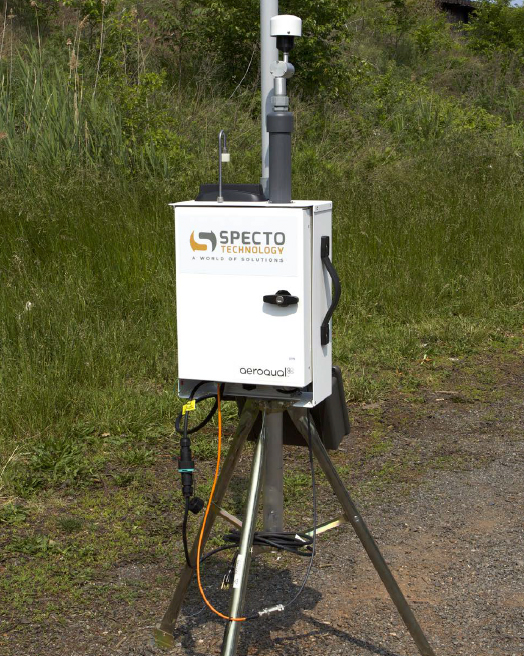
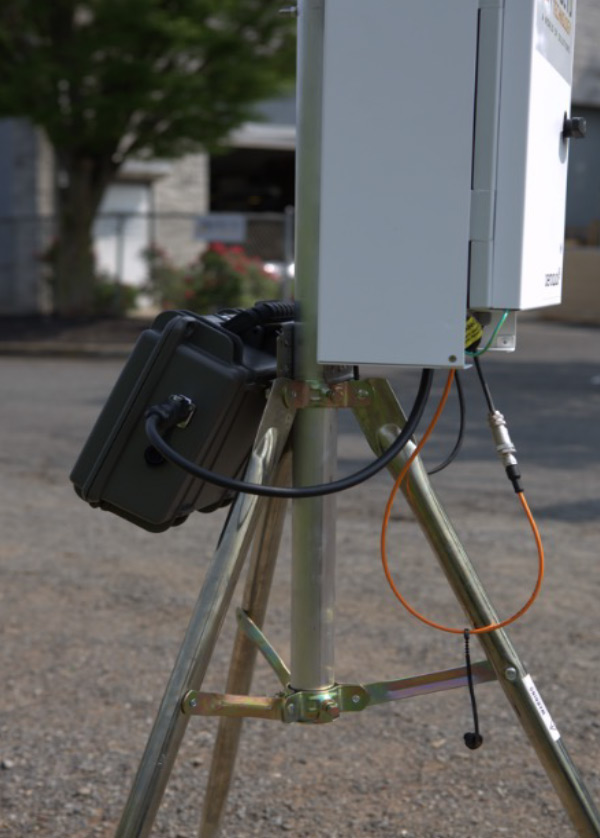
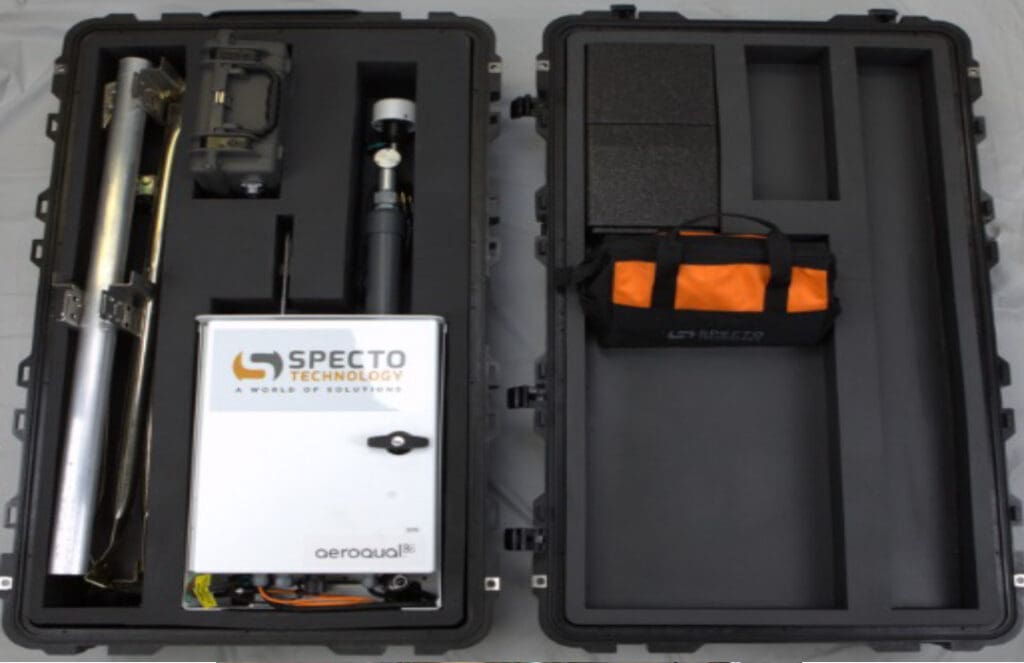
Real-time Perimeter Monitor (VOCs, “PM10” and Weather)
Confirmatory Sampling
If real-time monitoring specific to contaminants is not being carried out, it is important to use confirmatory laboratory samples to verify the accuracy of the data. This type of sampling is intended to demonstrate and document that the surrogate real-time sampling is effective at keeping contaminant air concentrations below HBTVs for the workday.
Approved monitoring methods include USEPA, NIOSH, OSHA, other State and Federal agencies (e.g., California Resources Board), and NJDEP-certified methods. Each method outlines the sampling procedure, analytical methodology, and QA/QC requirements for the measurement of the COC.
Please note that for some COC, multiple methodologies may be required to capture multiple fractions (volatile and particulate). These include mercury, naphthalene, and PCBs.
A list of appropriate methods for each of the COC compound groups mentioned in this brochure can be found in Appendix D of the technical guidance document. Example DQO checklists for common real-time analytical methods can be found in Appendix E.
We highly recommend engaging the services of an ambient air quality professional to guide the selection of appropriate sampling methodologies and for the training of field staff.
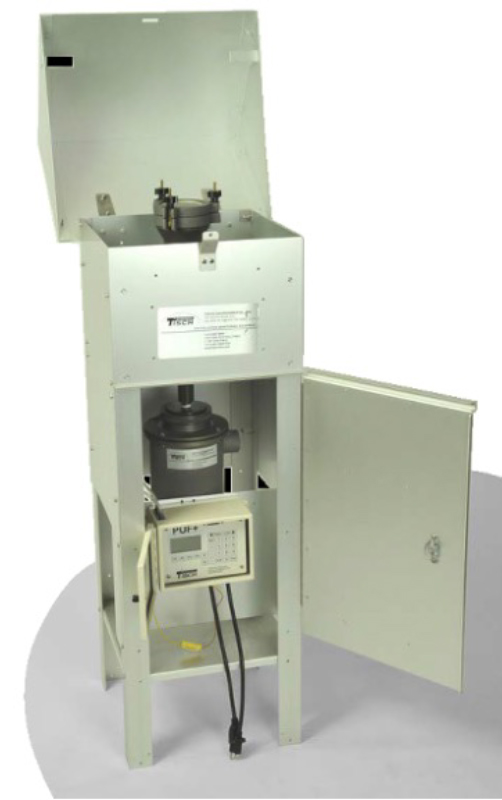
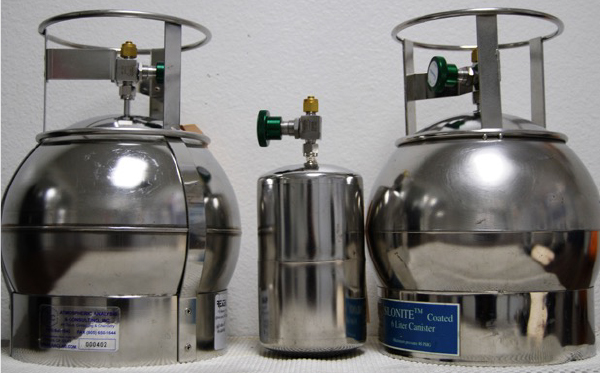
STEP 5 – Identifying Sampling Monitoring Locations and Schedule
Sample Locations
Real-time monitoring should be performed at either:
- the off-site sensitive receptors themselves, or
- at locations between the active work area and these receptors (typically on the site perimeter)
Priority should be given to monitoring downwind from remedial areas where higher contaminant concentrations are predicted and proximity of sensitive receptors. As wind conditions may change on-site during the day, it is recommended that a weather station is installed on-site to determine which monitors are upwind (UW) and downwind (DW).
Typically, at least one monitor should be placed upwind of the work area and several monitors downwind from the active work site. Monitors may need to be re-positioned if the work area changes significantly and monitors are no longer upwind from sensitive receptors.
NJDEP guidance also recommends comparing upwind and downwind measurements to determine the contribution of work activities. This removes the effect of off-site sources (i.e., wildfires, local pollution) from the data set. Air quality monitoring software tools are available such as Aeroqual Site Contribution which automate site contribution calculations in real-time and offer daily report generation.
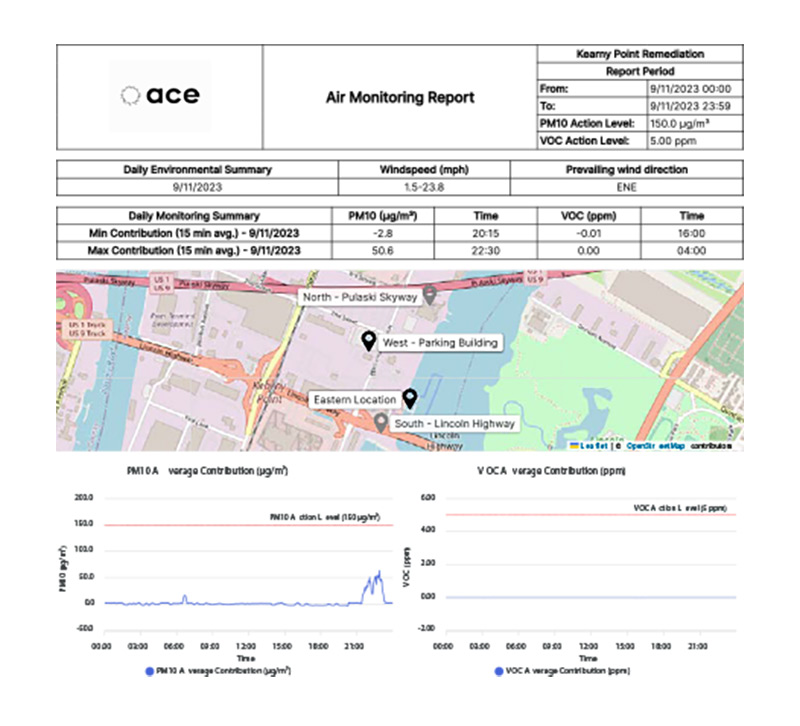
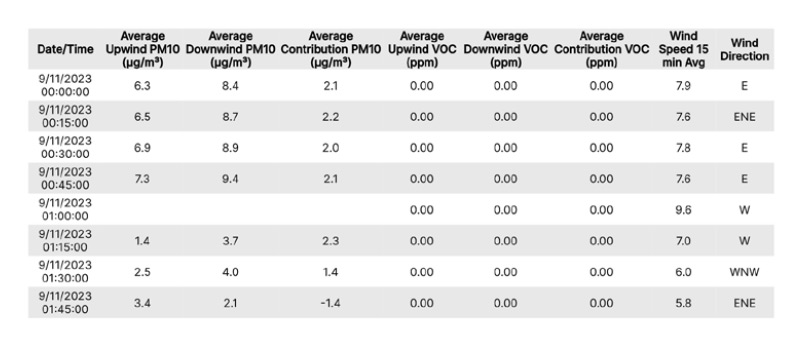
Automated site contribution data using real-time weather data to assign UW and DW monitors.
Confirmatory samples should be taken at monitoring locations downwind of the active work area and in close proximity to sensitive receptors.
Monitoring Schedule
Real-time monitoring should be conducted for the duration of the project during working hours and consideration should be given to whether 24/7 monitoring is appropriate based on the CSM.
The guidance document recommends confirmatory sampling on three consecutive days at the commencement of emission-generating activities, with periodic sampling (e.g., weekly) thereafter. Sampling should be conducted for the duration of the workday.
Background monitoring is recommended before commencement of the project in a similar fashion to what has been proposed in the PAM plan during site activities (locations, work-day hours).
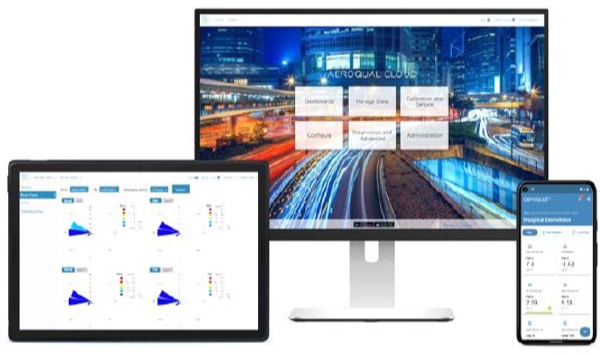
Wind rose plots, data analysis, QA/QC, online journal entries and real-time alerts (SMS/Emails) can be used to validate exceedances.
STEP 6 – Select Actions to Address Exceedances
The PAM plan should include the on-site actions taken if there is an exceedance of the HTBV and/or Response Levels. Typically, the first step taken is to validate that the exceedance is due to site activities and not an instrument malfunction, off-site source, or other outlier.
Best practice management controls of dust and vapor are required at the site and an exceedance alert can be used to trigger various site mitigation measures (water application/physical barriers/cease work). The guidance document includes an example of the steps that may be taken in response to an exceedance.
Confirmatory sampling may also be conducted if there are multiple real-time exceedances. The duration of these samples may be shorter (i.e., a grab sample for SUMMA canisters) for direct comparison with the exceedance period on the real-time monitor. For some methods (i.e., gravimetric) it is important to ensure the sample time is sufficient to lower the method limit of detection below the established HTBVs.
STEP 7 – PAM Plan Review, Modification and Documentation
The PAM Plan must be reviewed periodically, and any changes documented. Any modifications (frequency, locations, change to HBTV/Response levels, etc.) must be justified with monitoring data collected during the project.
A PAM report must be provided following the completion of the remedial activities. The report must contain:
- Contaminants monitored;
- HBTVs, Response Levels, and their basis;
- Site map(s) showing actual monitoring locations and receptors, and modified locations if applicable;
- Details of any modifications made to the PAM plan during implementation, and supporting documentation to justify the modifications;
- All exceedances encountered with appropriate explanation of how they were resolved;
- Daily data evaluation, including results from upwind stations, and overall results summaries. Problems identified and actions implemented for their resolution should also be noted;
- All data deliverables, including data logging files from the meteorological and monitoring stations, and daily wind roses (include as appendices);
- All results and QA/QC documentation for confirmatory laboratory analysis;
- All equipment calibration records and certification sheets; and
- All sample or measurement traceability documentation (e.g., chain-of-custody records, sample or measurement location maps/drawings, and any other records/notes pertinent to the assessment of measurement quality).
Other documentation includes those necessary to adhere to the Quality Plan Technical Guidance (QA/QC Guidance) including data quality objectives and indicators (DQO and DQI) and real-time monitoring equipment and laboratory sample collection QA/QC.
Contacts
To learn more about the NJ PAM Guidance or to schedule an introductory seminar, please contact our Environmental Director, Mick Pocock at mick.pocock@spectotechnology.com or 866 925 7737 ext. 709.
Alternatively, you can contact NJDEP directly: https://www.nj.gov/dep/srp/srra/srra_contacts.htm

